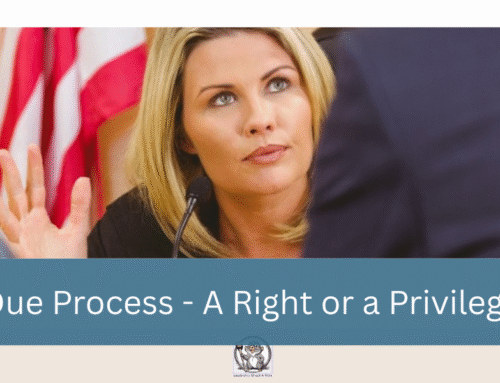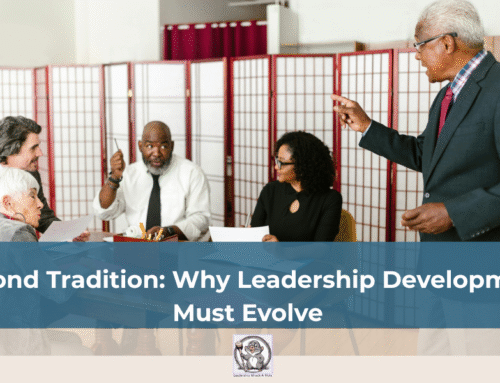
Losing It Never Works!
By Ric Shriver
I was meeting with several leaders and professional staff on a corporate campus several months ago, enjoying controlled, productive, and generally positive conversations with well-respected individuals who shared a common purpose, values, and business priorities.
I was wrapping up a final meeting with a couple of functional leaders when alarm bells started ringing through the office intercom followed by a firm and controlled announcement that employees throughout the corporate campus should quietly and quickly retreat to a secure office or room, locking the doors behind them. A brief explanation was provided indicating that a local law enforcement issue was at hand and that all employees should remain safely locked behind office or room doors until further notice! Yikes!
The functional leaders I had been meeting with led me to an open office, ensuring that the three of us were safely inside the office before locking the door. But before we could close and lock the door to the office I heard and observed what appeared to be a senior executive for the business running up and down the hallway, yelling to everyone this person saw to “get into a safe place – NOW!” I also observed this person literally slamming the office doors behind the retreating members of the staff. While we didn’t know for sure what the nature of the law enforcement issue was, we were guessing that an active shooter was present, taking aim at the corporate campus staff – a rather unsettling potential threat which we all agreed needed to be responded to in the safest and most expedient way possible.
The two functional leaders whom I was quarantined with were, for the most part, quiet and calm. While we were concerned about the circumstances and the potential threat they posed, we did our best to use our phones to seek whatever information might be available, sharing relevant information with each other as each of us received it. We stayed behind a locked door for nearly three hours until an all-clear announcement was made. Somewhat shaken by the event, we calmly bid each other a better afternoon and safe passage to our respective homes.
We later learned that there were fatalities and numerous injuries – a tragic situation under any set of circumstances and one which we hear about all too often in a world filled with growing unrest. One of the functional leaders I had been meeting with later complemented me on my calm demeanor during the crisis – I made the same observation about her. Nothing any of us could do would have made any difference to the outcome of the event, but we, along with other members of the business unit we were in, were safe. For that outcome we were grateful. My other observation and conclusion was that the observed senior executive’s shouts and perceived frantic behavior did little to calm an already frightened corporate staff.
Get More Tools From the Resource Bank
I had the privilege of working under the direction of a retired U.S. Army Colonel early in my career. One Friday afternoon I was asked, along with one of my peers, to spend the weekend in the office finalizing a proposal for a large acquisition our company was planning on undertaking. My colleague and I were given some precise instructions for completing a detailed analysis of complex financial data that had been pulled together during the due diligence process for the planned acquisition. While the process we were charged with was tedious, it appeared to be straightforward. Like good soldiers, we complied with the request, finishing the analyses and documentation by mid-Sunday afternoon.
My colleague and I arrived at our corporate office early the next morning to review our work with the Chief Financial and Legal Officers for our company. My managing executive, the retired Army Colonel, was also present at the meeting. Less than five minutes into the presentation to the officers, the Chief Financial Officer dropped his pen and began shaking his head exclaiming “you used the wrong parameters to complete your analysis – this is useless for us!” I didn’t respond well. In a rather stern and frustrated voice I threw the printout of data I was holding onto the conference table and conveyed to those present that “if the &%$#ing financial people couldn’t give us the right instructions, why the hell did we just spend the entire weekend analyzing the wrong data?!” I stormed out of the room after voicing my animated discontent. My managing executive (the retired Army Colonel) followed me out the door and into the office lobby. He placed his hand on my shoulder and said in a calm but stern voice, “calm down.” He then conveyed to me that he too had experienced some bad days, the worst of them being when he realized he had lost ten of his men in a battle during the 1991 Desert Storm in Iraq. Nothing could have shut my fiery emotions down quicker than the hard truth he shared with me during that moment – yes, that put my current setback in perspective, and I was humbled. I will never forget that moment and his calm, yet firm, message. I needed to “get a grip!”
As leaders we never know for sure what types of crises we may face in our respective roles. The scenarios described in the preceding paragraphs are not unusual, but what is not expected or appreciated by the teams of people we lead and the customers and clients we serve are uncontrolled, emotional outbursts that only compound the distress our stakeholders are experiencing. So, the watch word for all leaders is to stay as calm, collected, and cool as possible. Demonstrate confident resolve to face the crisis with resolve while conveying competence and confidence to the members of our teams.




